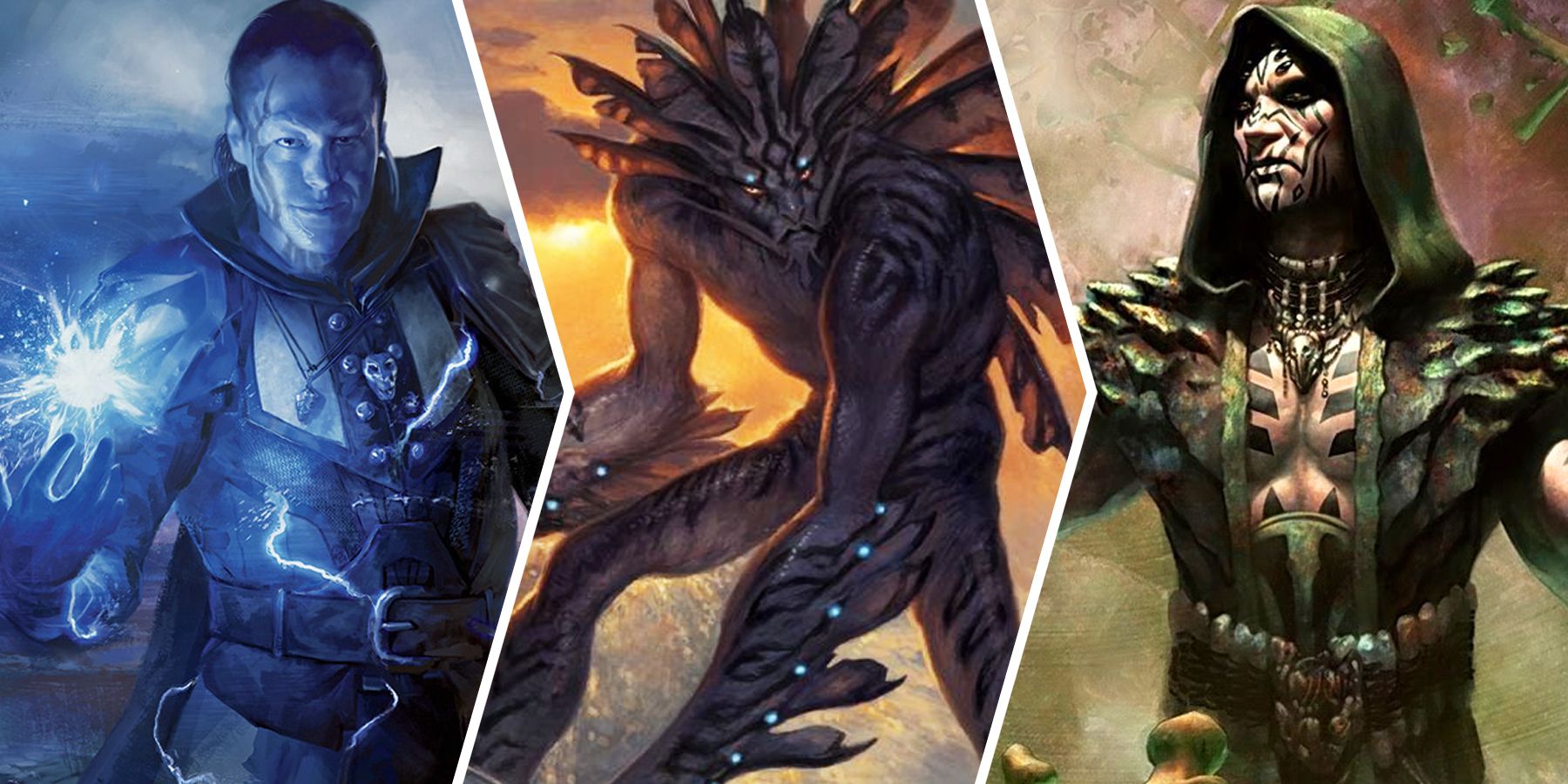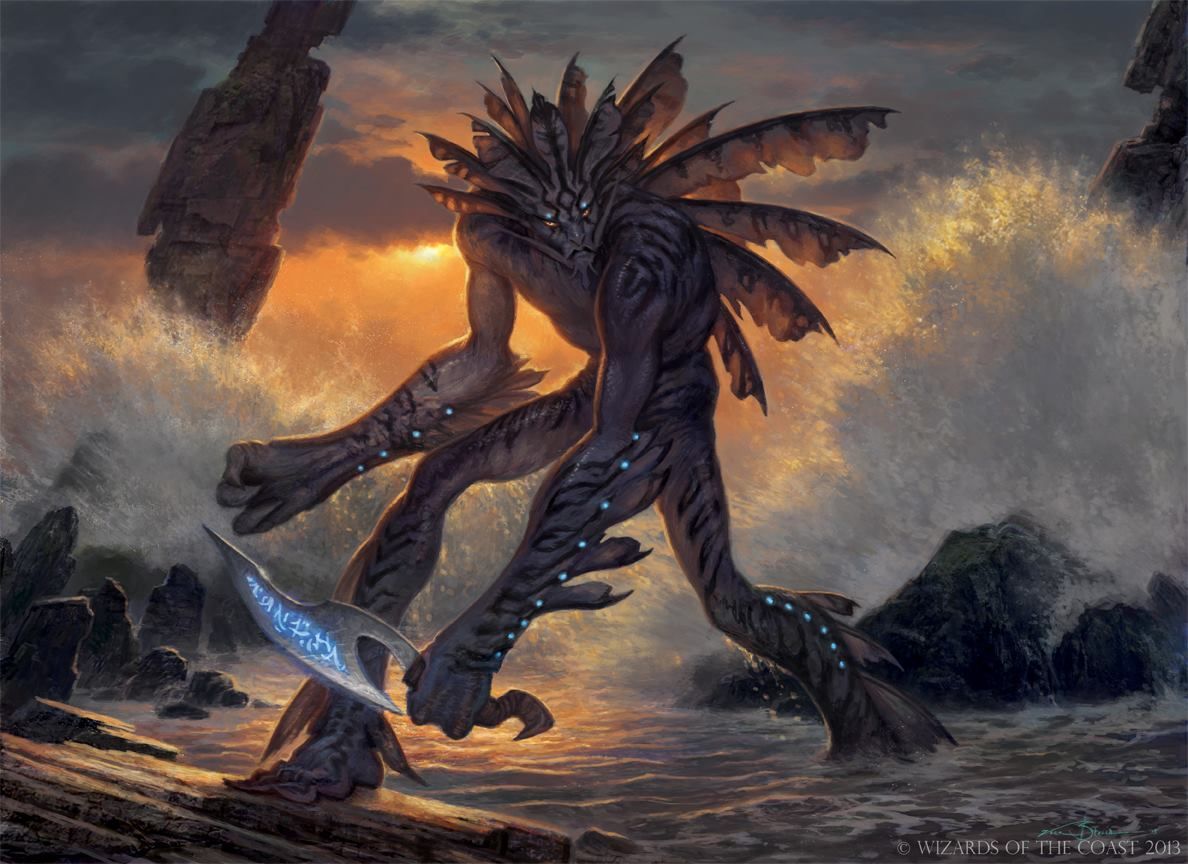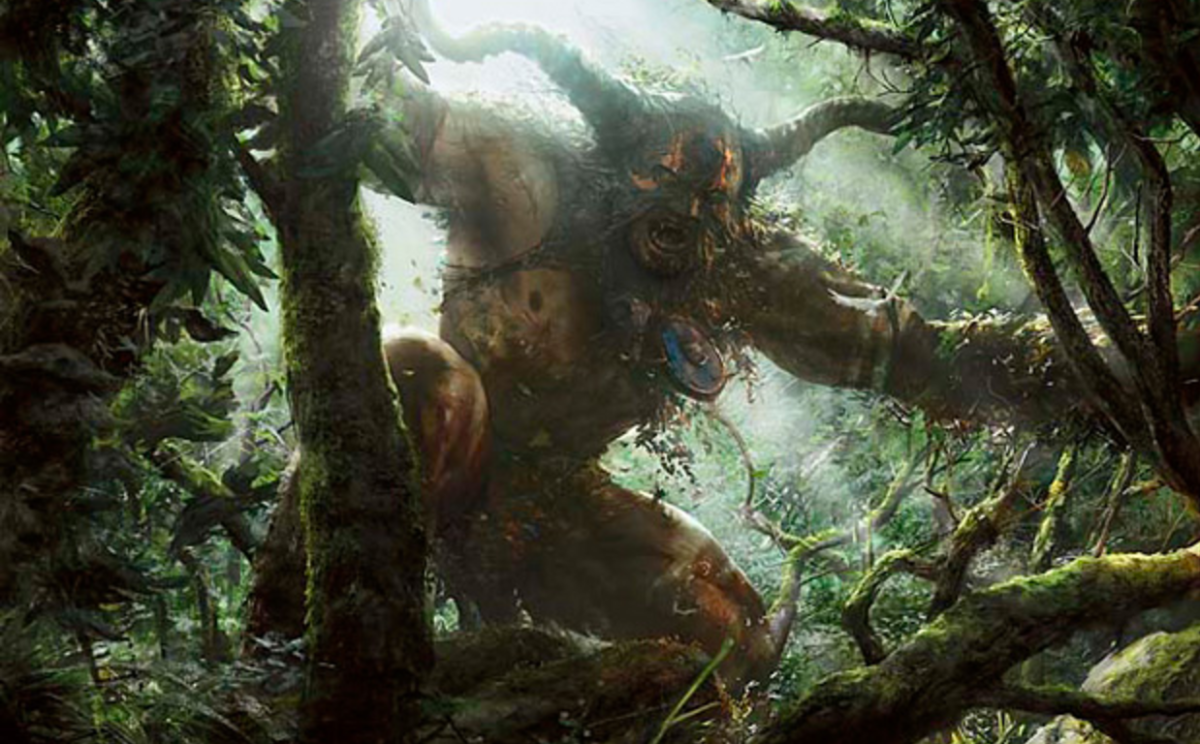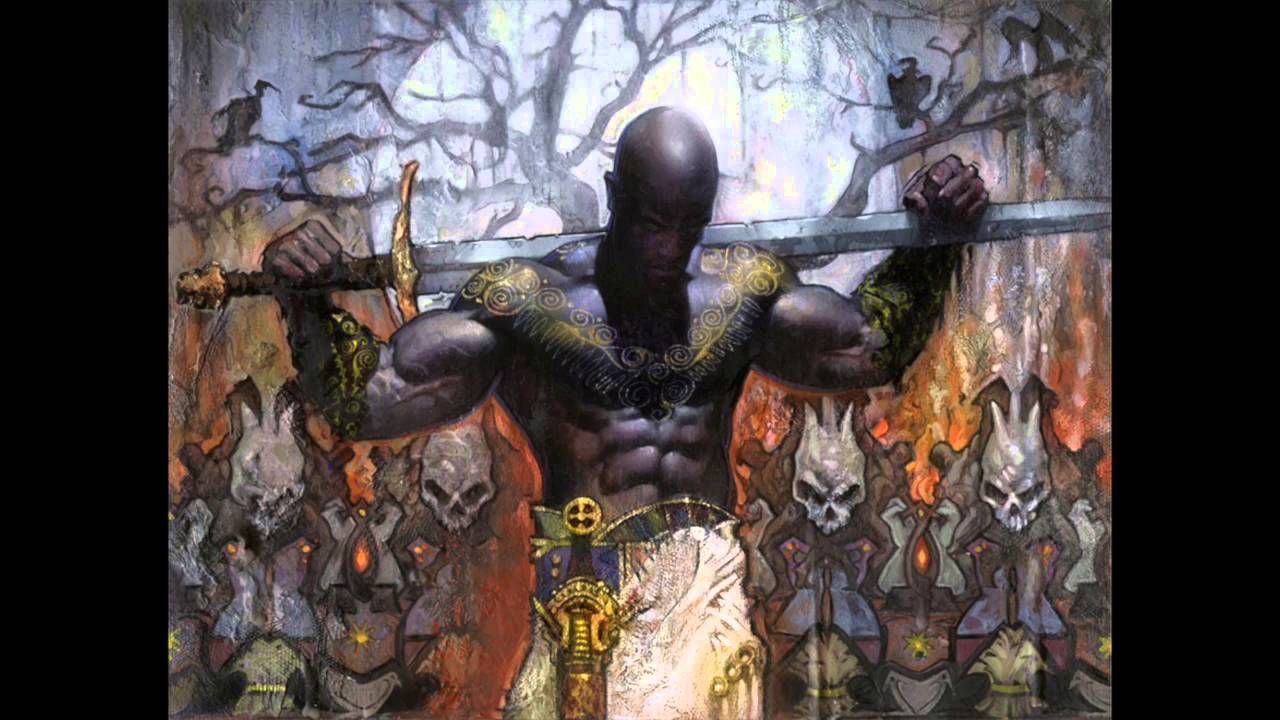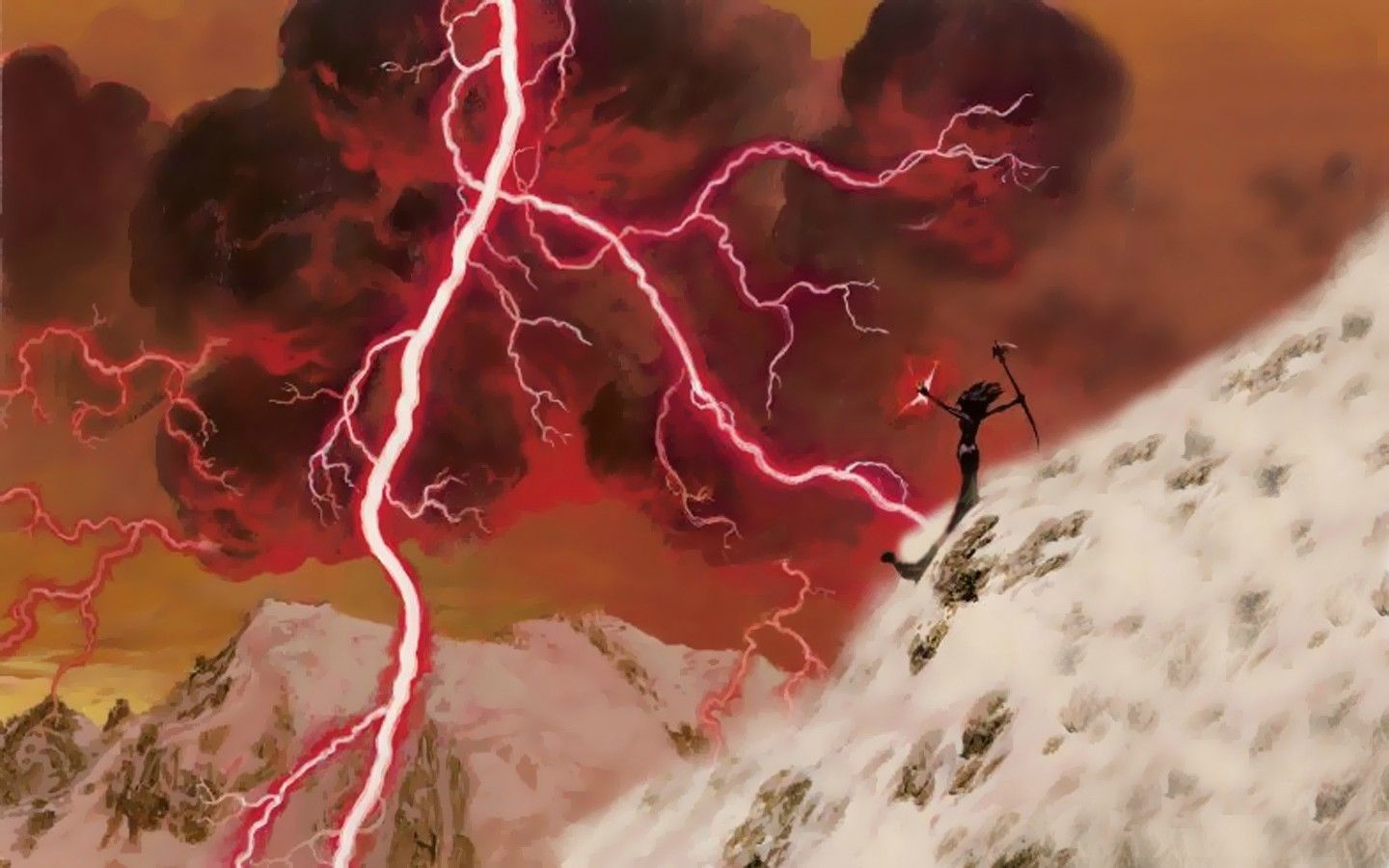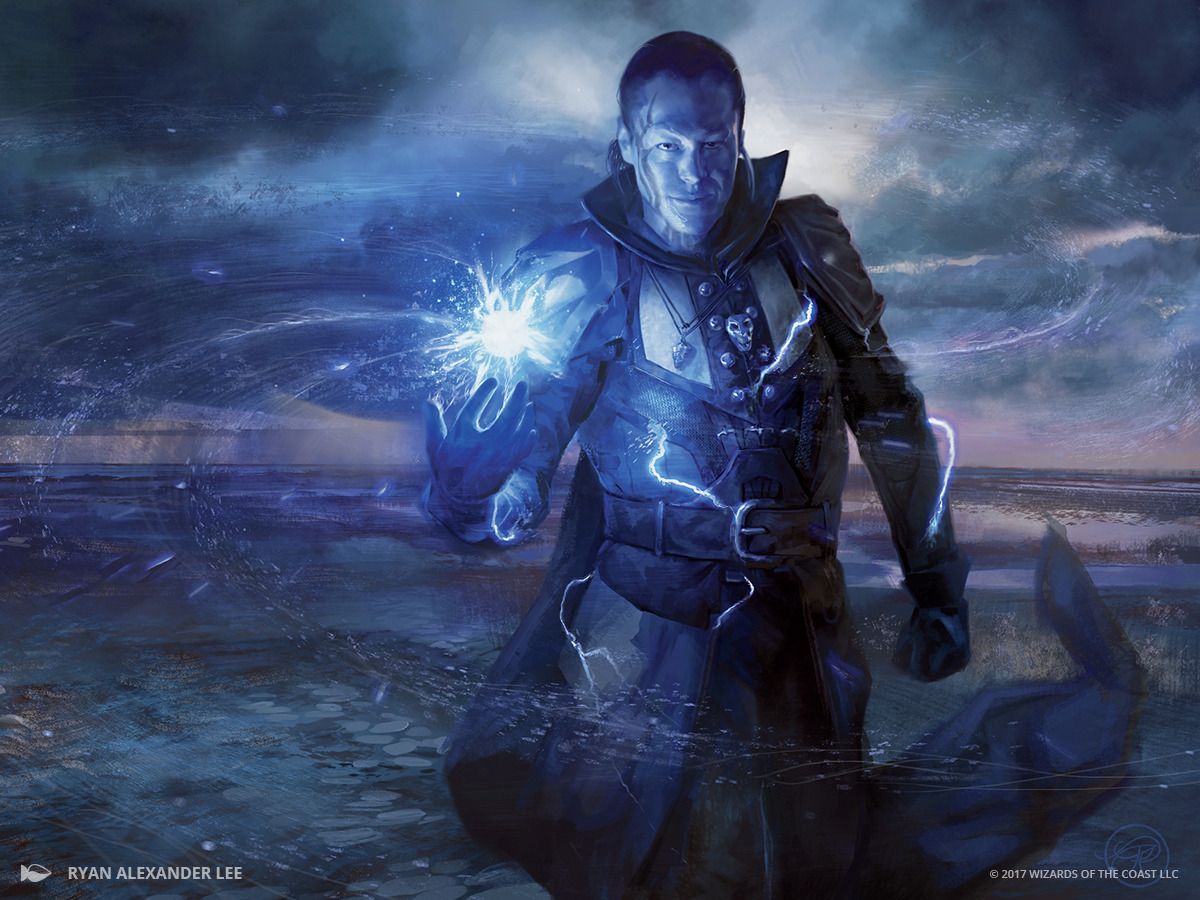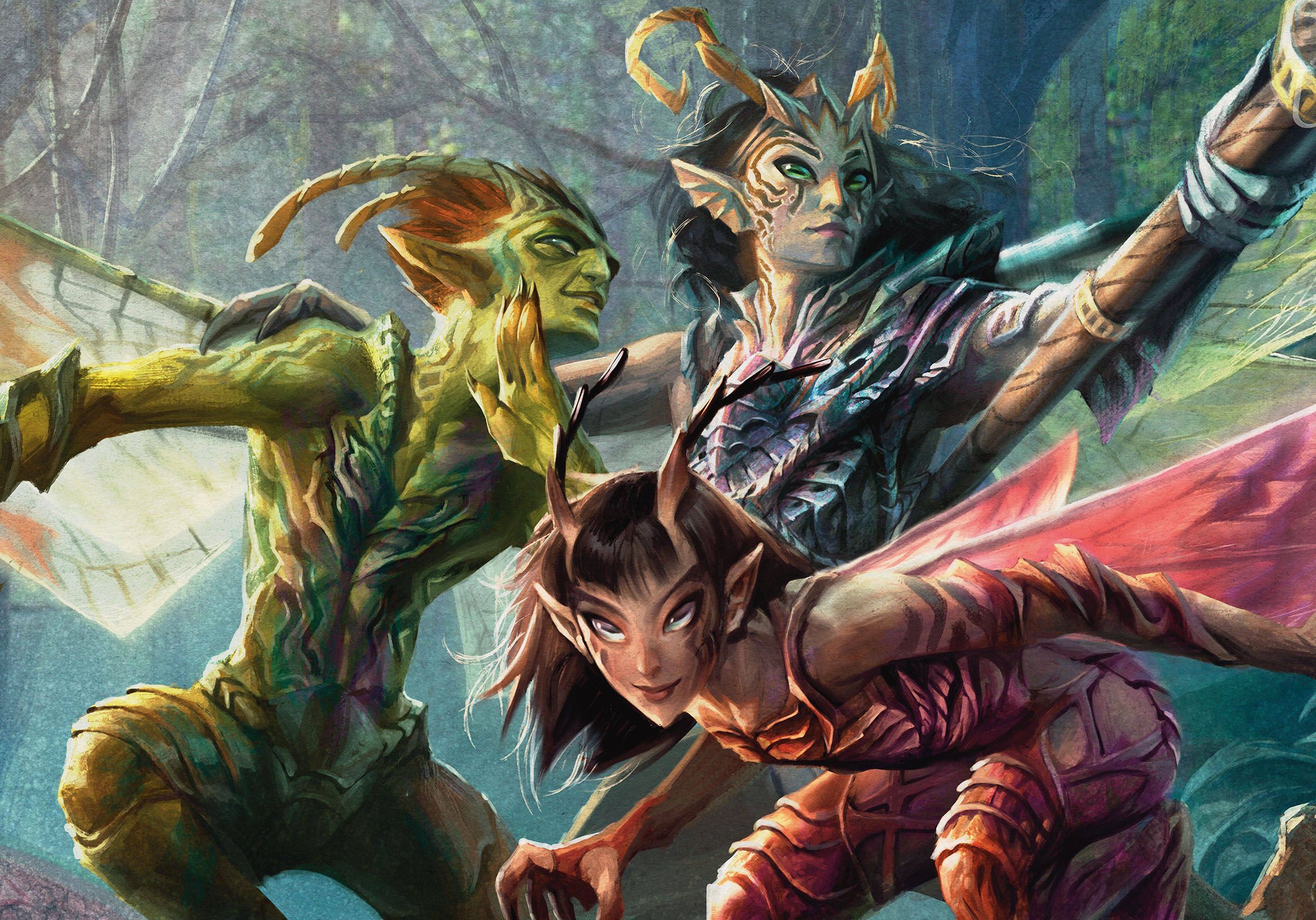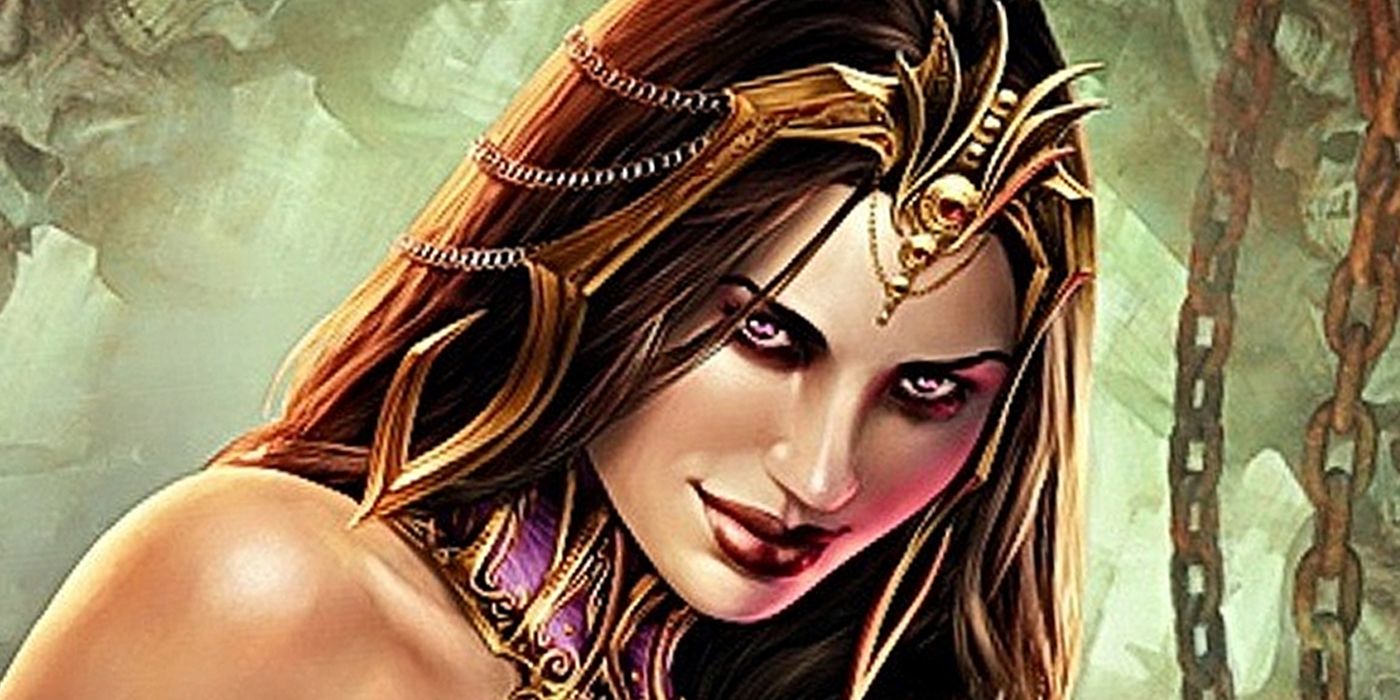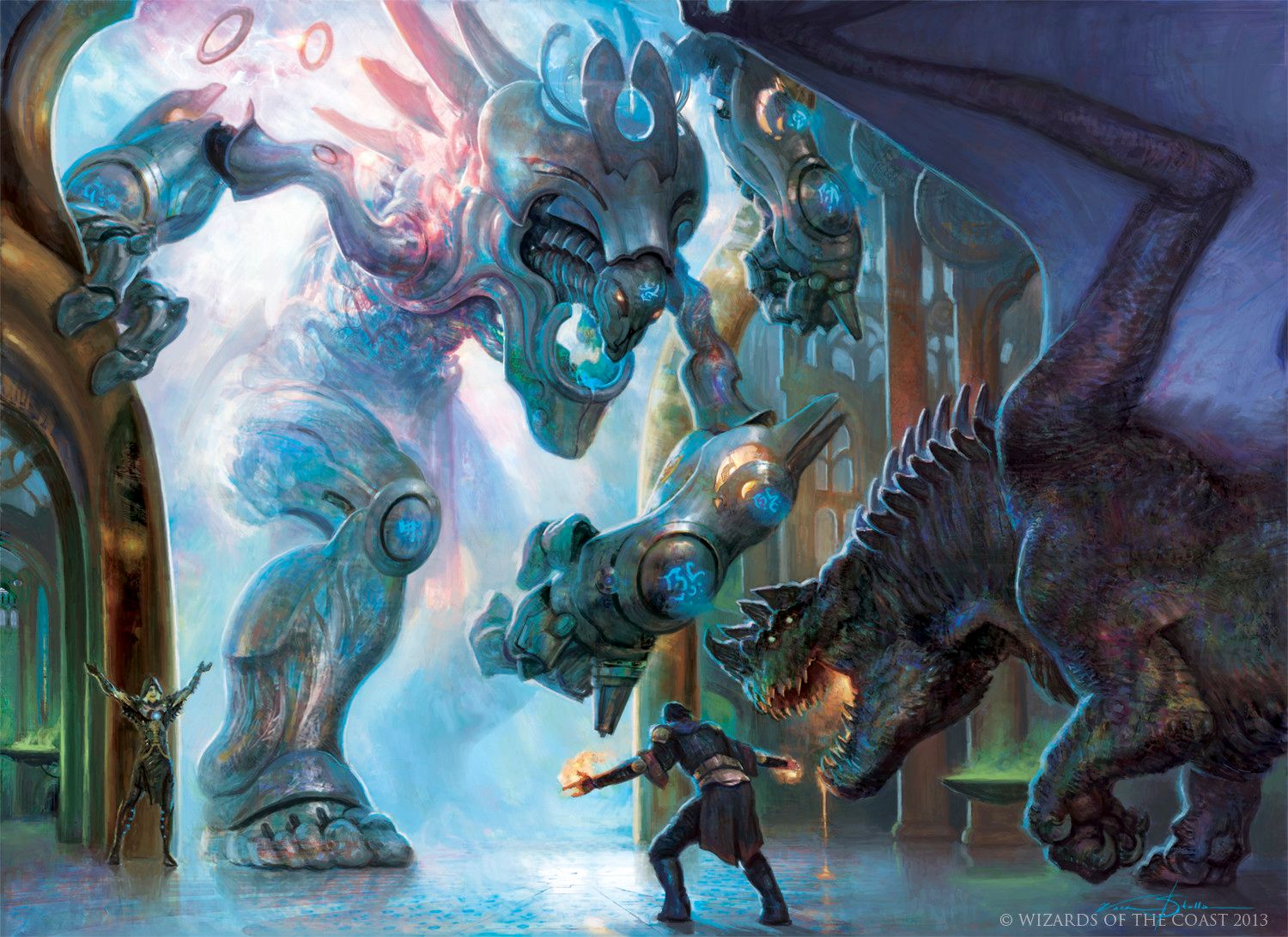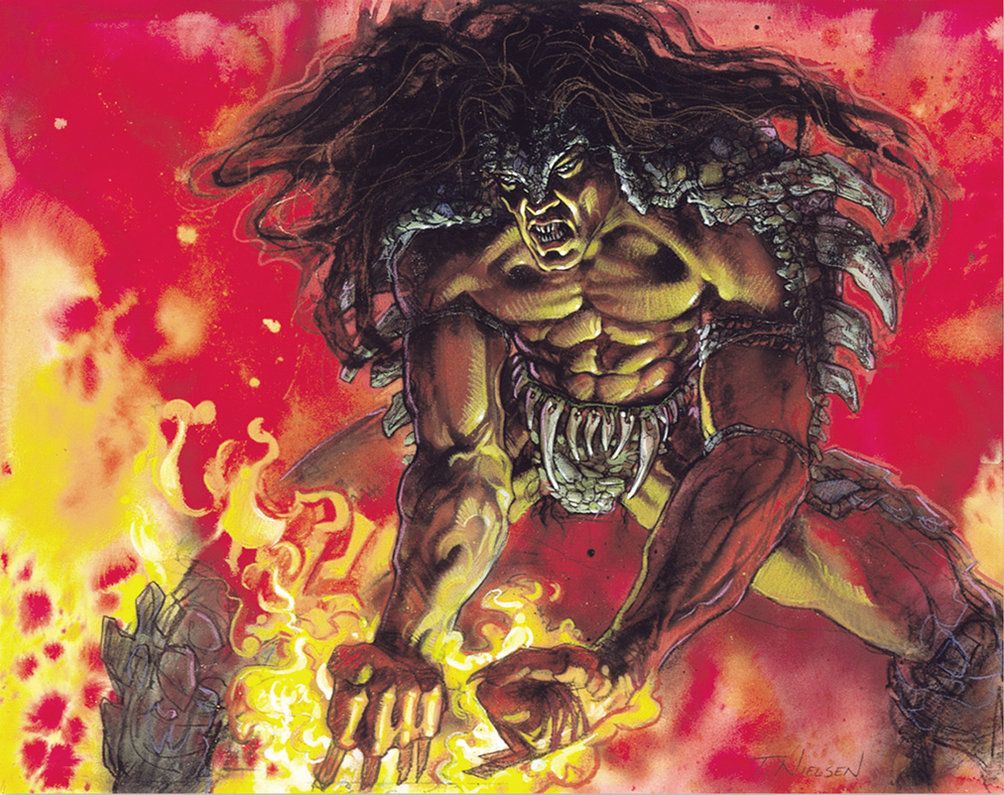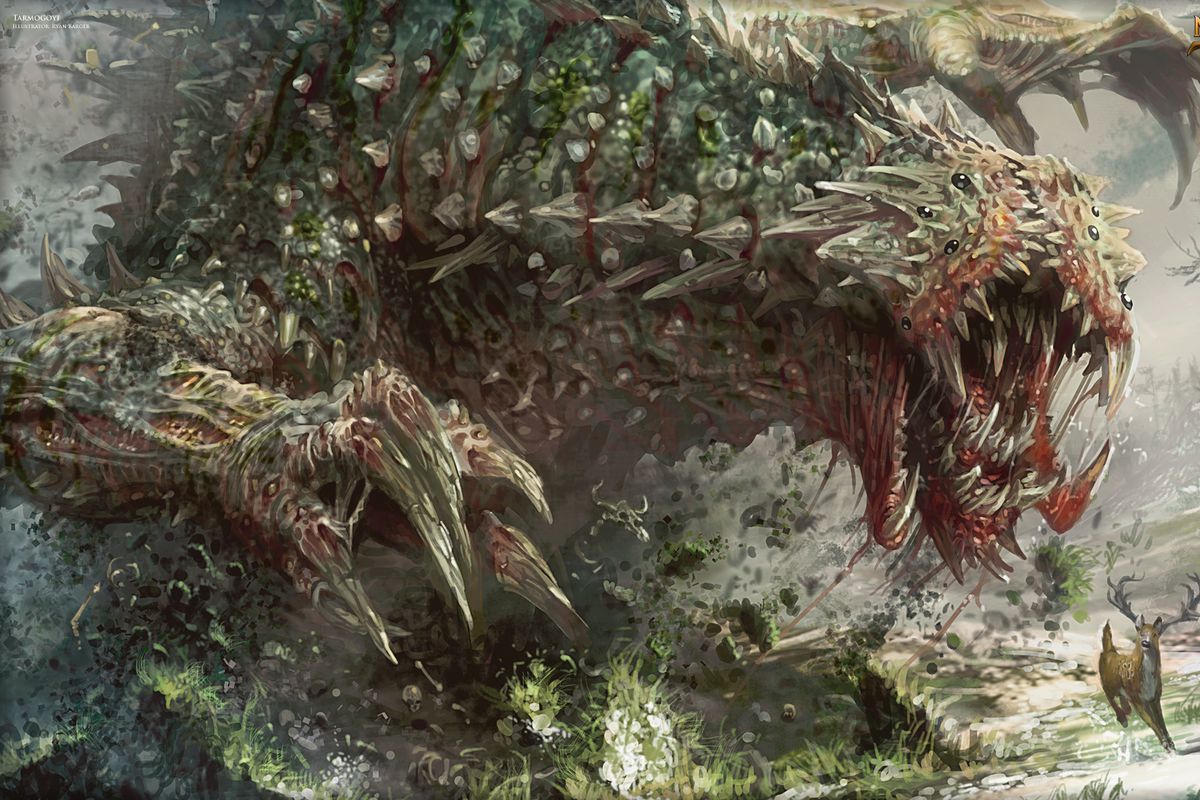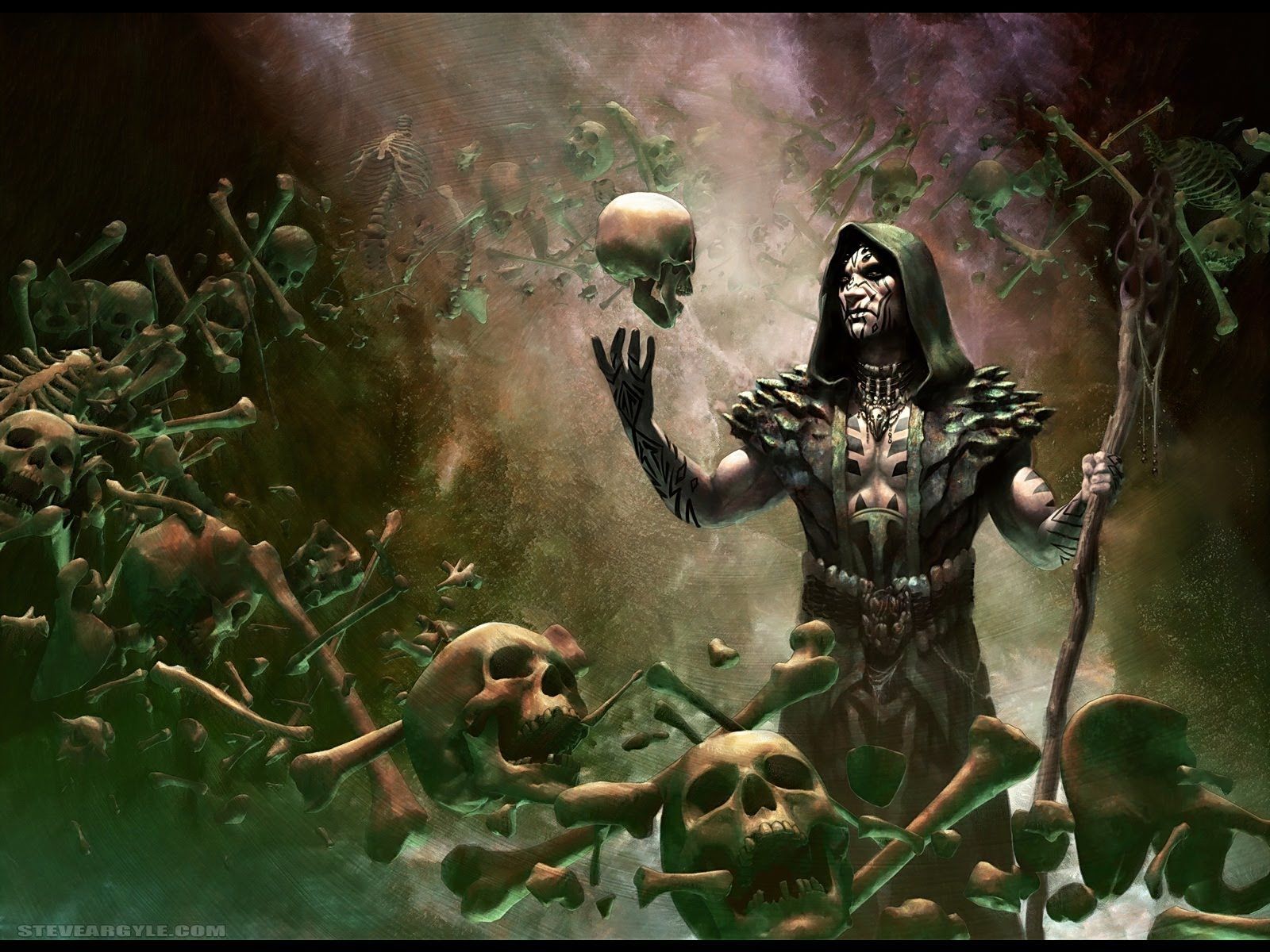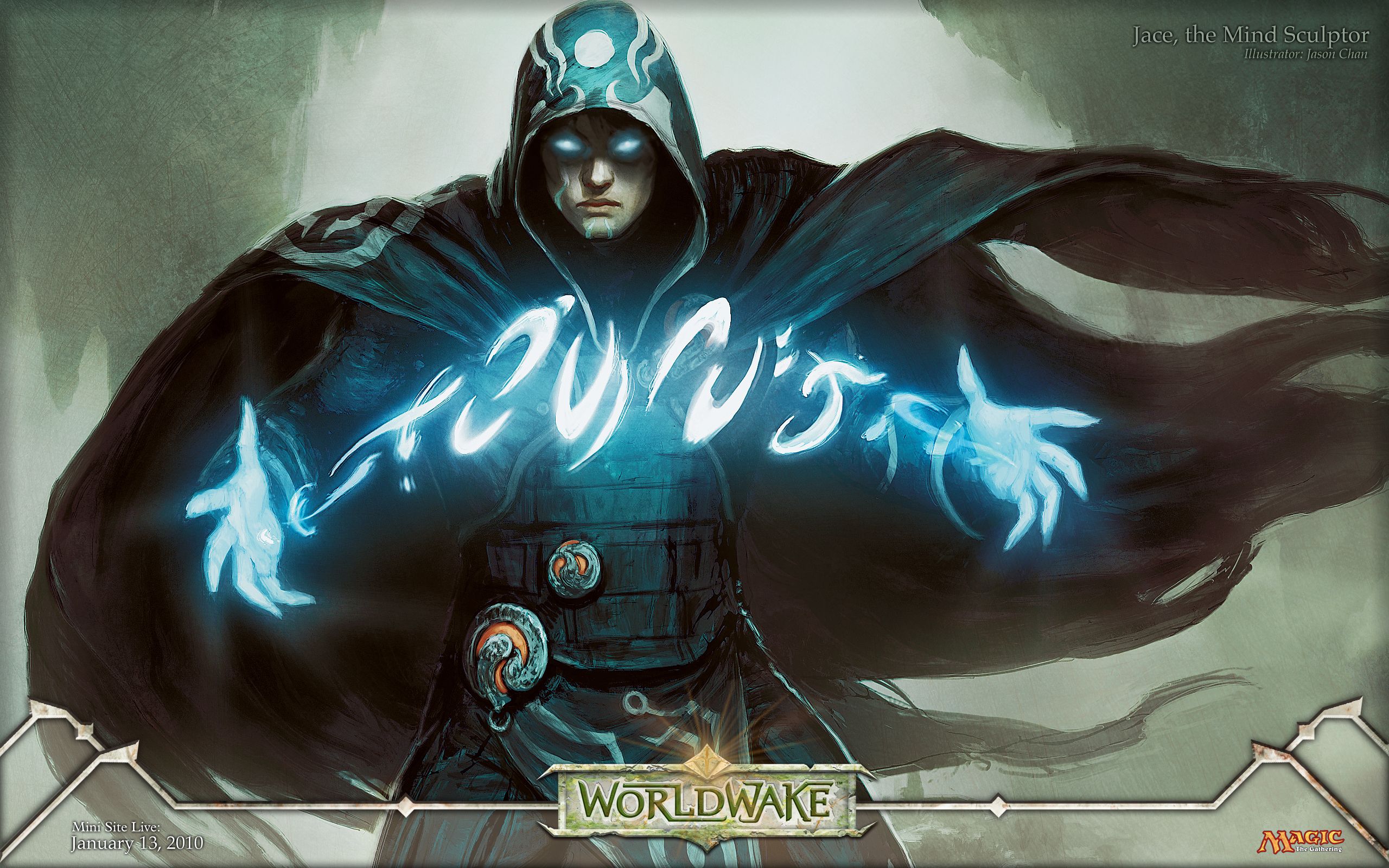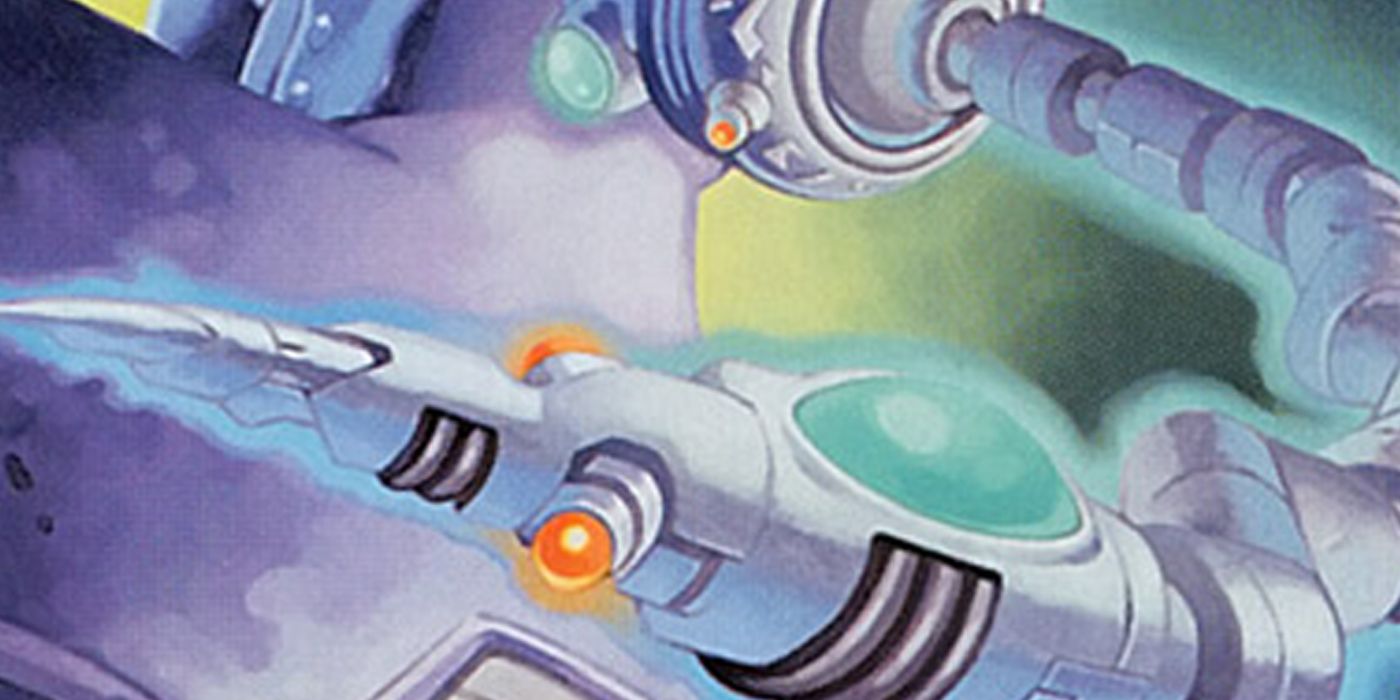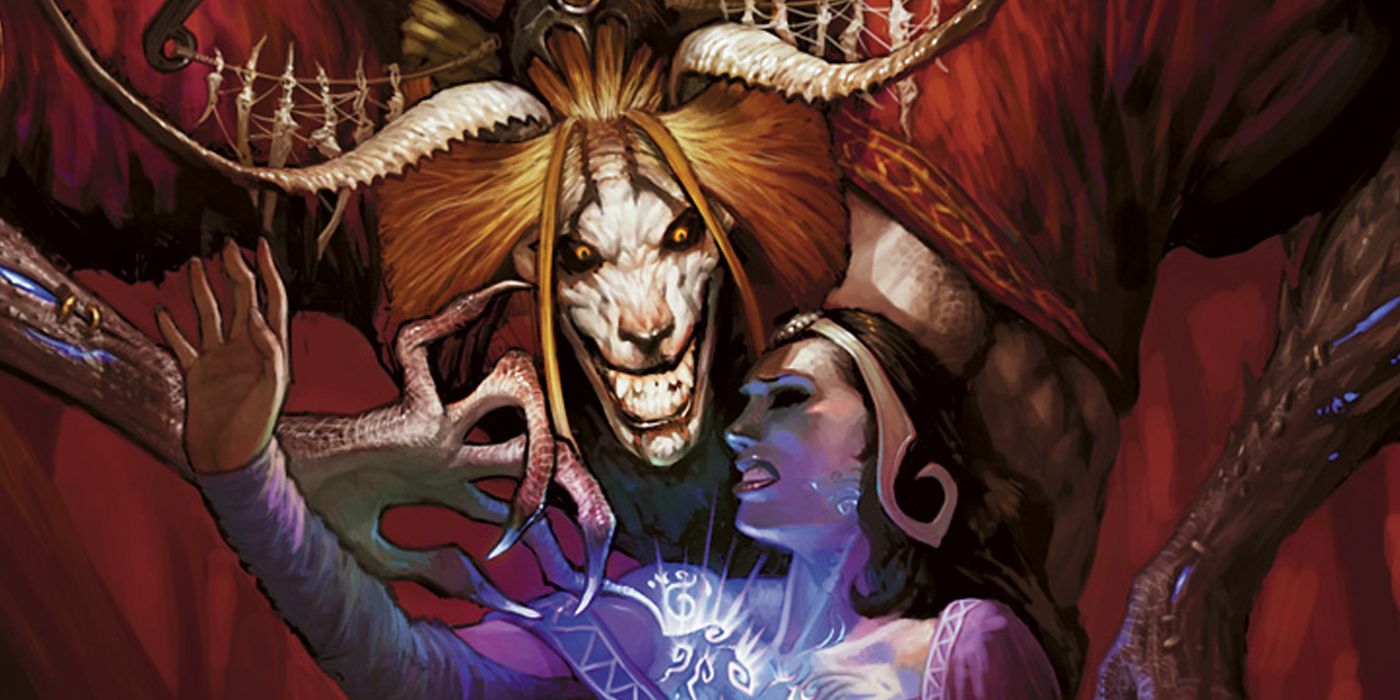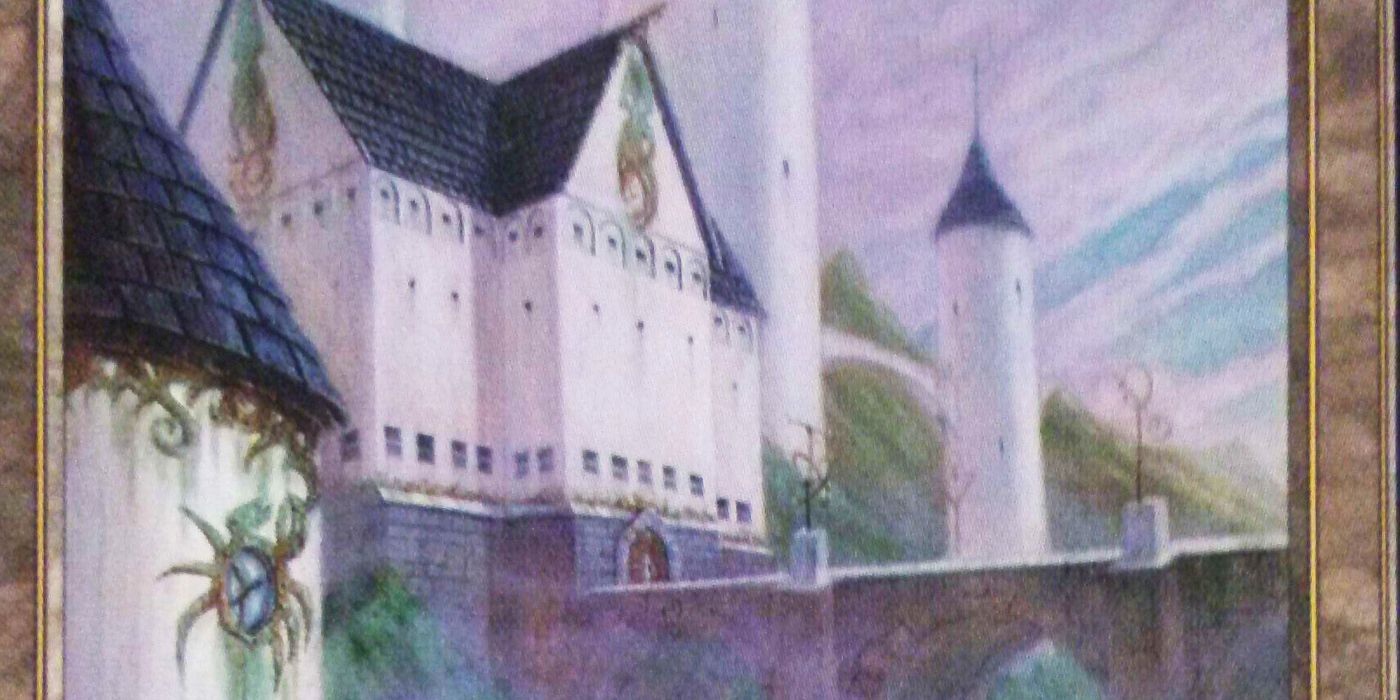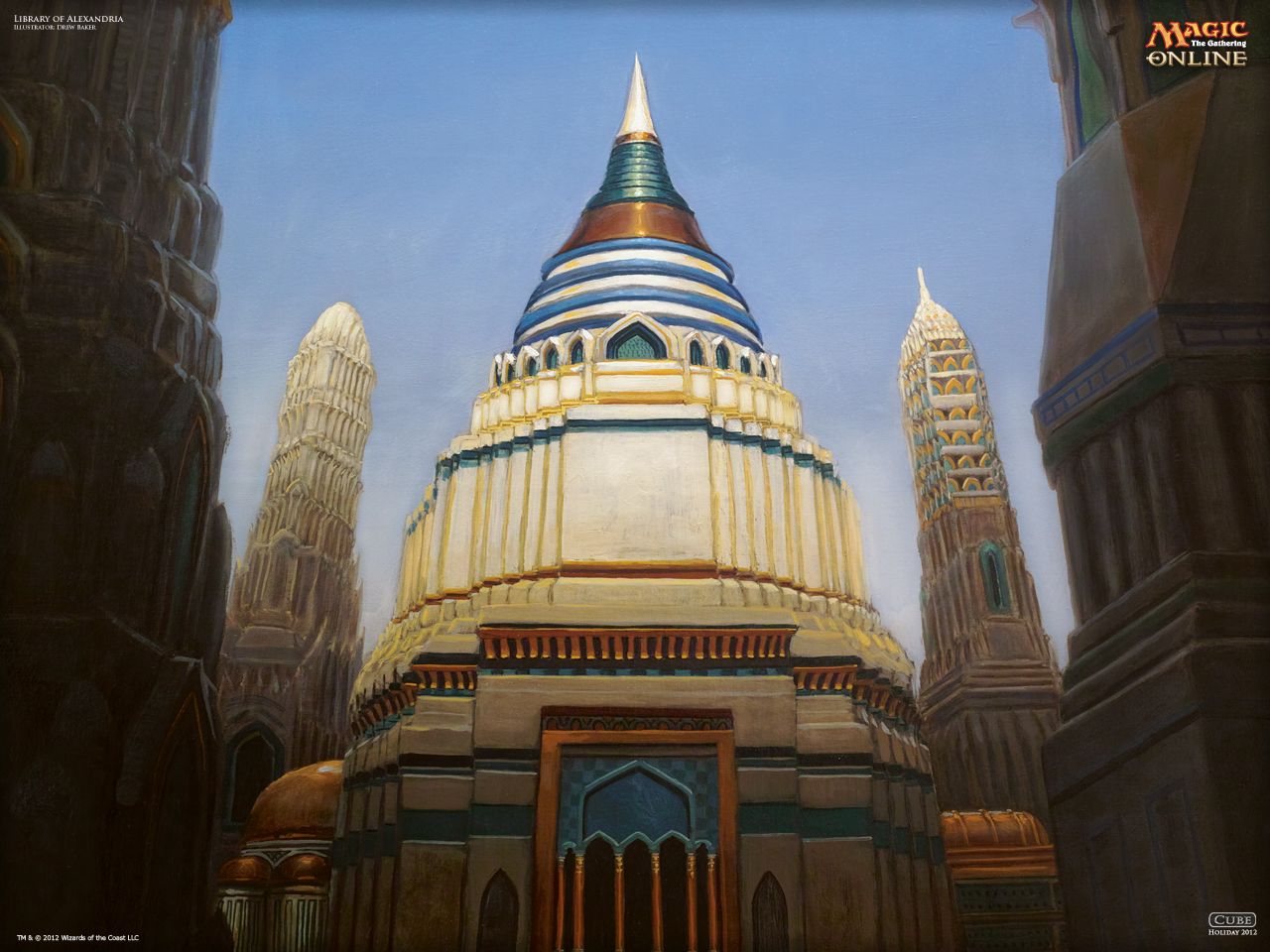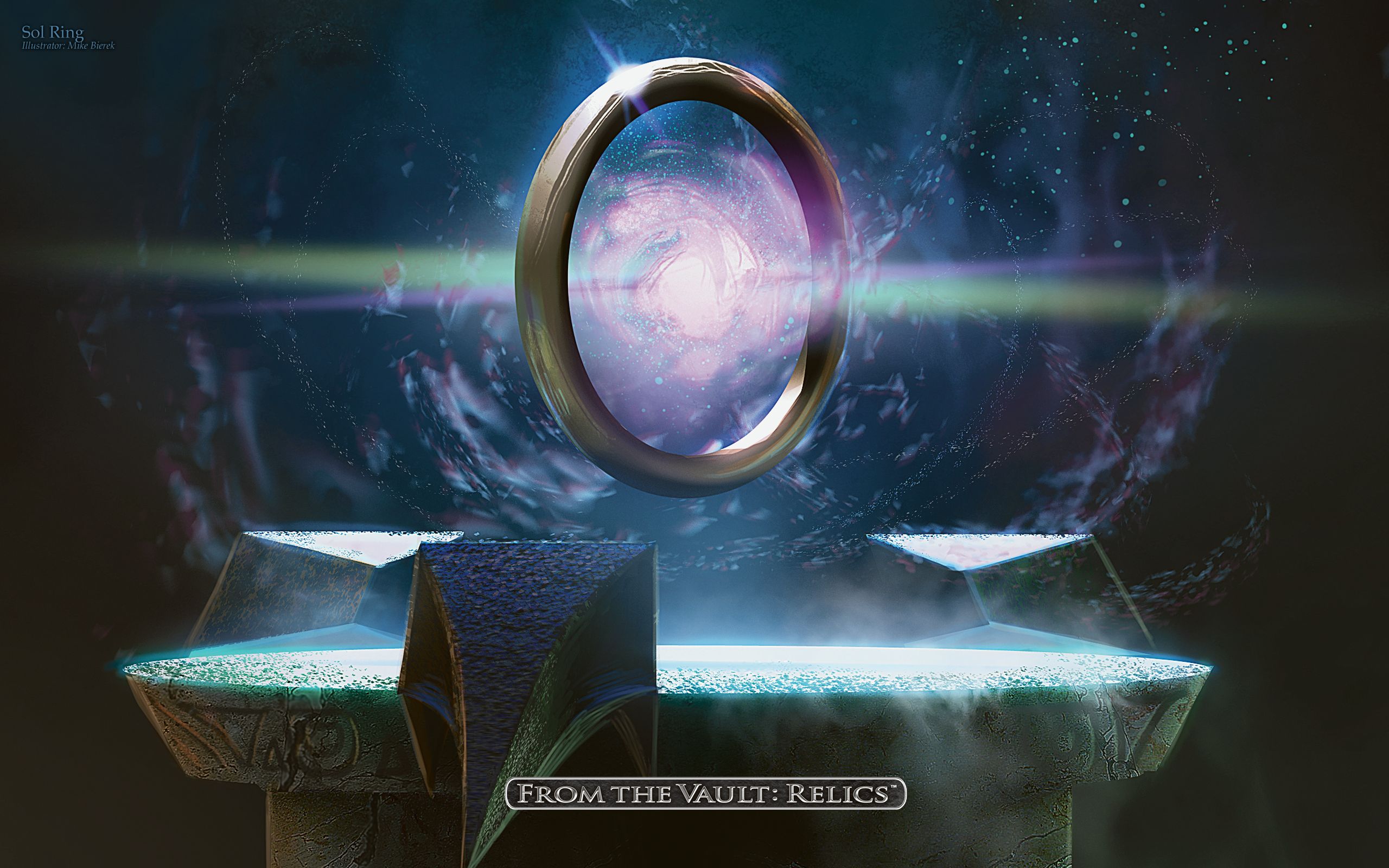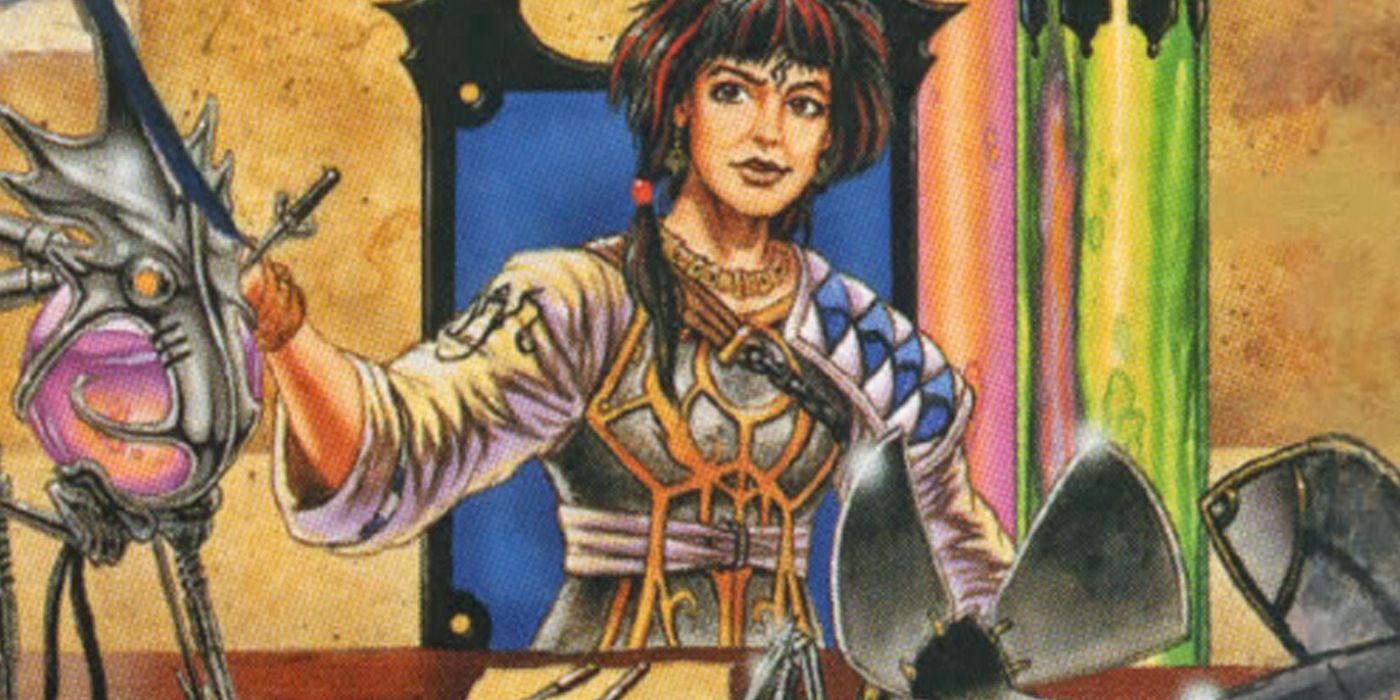Collectible card games are the only hobby where you can pay thousands of dollars for cardboard and little else! From Pokemon to Yu-Gi-Oh, card games have been a favorite pastime in elementary schools across the world for decades. Some games have even found great success digitally, like Hearthstone and its many followers/imitators. But one collectible card game started it all. That's right, we're talking about Magic: The Gathering! First released in 1993, it continues to dominate the market to this day. Like many other things from the 1990s, it was part of a massive collecting fad. But unlike Beanie Babies, Pogs and dozens of other fads, it managed to avoid the collecting bubble burst and continues to be successful today.
With nearly 12,000 unique cards and billions upon billions of copies, Magic's card list is frankly staggering. Naturally, with so many cards, power levels can vary wildly. We could spend an entire list explaining just what makes a good card. Fortunately, publisher Wizards of the Coast already did that for us. So just for you, we've gone through every card and determined what the strongest cards in the game are. Artifacts, Sorceries, Instants, Lands, Planeswalkers and of course Creatures from across the Magic universe find their way into this list.
25 TRUE-NAME NEMESIS
True-Name Nemesis is an interesting little creature. In Magic, there are various formats with different rules and cards that are allowed. The most popular of the non-traditional formats (Standard, Modern and Legacy) is EDH (Elder Dragon Highlander), better known as Commander. This fan-created format is based around multiplayer games, where 3 or more opponents face off. The players choose a Legendary Creature as their deck's commander and attempt to come out victorious against all other opponents. Eventually, Wizards of the Coast noticed the popularity of EDH and began printing official decks for the format, complete with new cards specifically created for it.
In the second release of full decks, Commander 2013, True-Name Nemesis was released. As a creature, it could gain protection from one player, meaning that player could not target it with spells, blocks, or anything else that specifically targeted it. While a good card in multiplayer, players quickly realized just how powerful it could be in one on one matchups. It quickly became one of the most played cards in the Legacy format, which allows cards from all printed sets with a relatively small banlist. While it didn't dominate the format, it quickly became a format staple and remains so to this day.
24 BRAINSTORM
One of the most powerful tools in any Magic game is card advantage, that is, having more cards than your opponent. Spells that allow you to draw more cards are always strong, and those that can do it cheaply (for less mana) are even better. After all, the more cards you can draw, the more spells you can cast, and the closer you can get to your deck's win condition. With all that in mind, one of the best (non-banned) card drawing spells in the game is Brainstorm. First printed in 1997, Brainstorm is only legal in Legacy, Vintage and Commander, but it's a staple card in all those formats.
Brainstorm delivers a lot of value right off the bat since it only costs one Blue mana.
Since Blue is all about control, that is, keeping your opponent from doing what they want rather than attacking directly, card draw is vital for a Blue player. It allows the caster to draw three cards, then put two from their hand on top of their deck in any order. While the card draw is good, being able to engineer your next two beginning-of-turn draws makes it even better. And since it's an Instant spell, it can be cast at the end of an opponent's turn, making it the perfect spell to use free mana on.
23 PRIMEVAL TITAN
In Magic, there are groups of cards with similar themes and effects known as "cycles." Usually, a cycle is a group of five cards in different colors, with similar effects that are altered to match the color of the card. In the Magic 2011 set, there was a cycle of Giant Creatures with an effect that happened when they entered the battlefield or attacked that was called Titans. The Titans were all very powerful, particularly the Sun Titan and Grave Titan. But the Green Titan, the Primeval Titan, ended up standing above the rest. While it is a fairly expensive card, its effect and color made it a must-have for Green decks.
One of Green's most powerful skills is known as "ramp," that is, pulling Lands from your deck and playing them beyond the usual one-per-turn. This allows them to produce mana more quickly than other colors, and in turn, allows them to play big stompy creatures far earlier than other colors could manage. Although Primeval Titan does cost quite a bit of mana, Green allowed it to be played very early. And its effect hugely accelerates ramp, allowing three lands to be played per turn. The effect, which covers all lands, not just basics, was so powerful in the Commander format that it ended up being one of the few bans for that format.
22 SWORDS TO PLOWSHARES
One of the keys to any Magic deck is what's known as removal. Removal spells do exactly what they say on the tin and remove things. Creatures are the most common type of card that can be removed from play, so naturally, creature removal is the most common form of removal. Removal can come in many forms, from returning a card to the controller's hand, to direct damage, to giving the creature -1 enough times so that their health hits zero, to outright destruction or exile. While most forms of removal send the creature to the graveyard, Exile removes the creature from the game entirely and irretrievably. While most colors have access to removal in some form, White is the master of Exile.
Swords to Plowshares takes any creature out of the game for good.
Arguably the most powerful White removal spell was introduced way back in 1993, in the original Alpha set. Swords to Plowshares only costs one White mana and exiles any Creature at Instant speed, meaning it can be done at any time. Like most White exile spells, it has a drawback that gives the opponent something in return for the creature. Path to Exile, another White Instant exile spell, gives the opponent a land, for example. Swords to Plowshares merely gives the opponent life equal to the creature's power.
21 LIGHTNING BOLT
In Magic, there are several types of spells. Creatures can summon a Creature to battle the opponent directly, sometimes with an immediate or sustained effect. Planeswalkers are powerful cards that call forth another spellcaster to the battlefield. Enchantments create a sustained battlefield effect. Artifacts are tools or objects that can be used for a variety of purposes. Sorceries are one-shot effects that can only be cast on the caster's turn. And finally, there are Instants, one-shot effects that can be cast at any time. Perhaps one of the most iconic and powerful Instants in Magic is Lightning Bolt.
Lightning Bolt is a simple spell. For one Red mana, it deals three damage to a Creature or player. But like every other powerful card, it's true value lies in its returns. Lightning Bolt has long been a central spell in the "Red Deck Wins" deck archetype. There, a player builds a deck using only Red spells and mana and focuses on dealing as much damage as possible as quickly as possible. Since Lightning Bolt is so cheap, it's almost an auto-include. On top of being able to hit opponents, it can also work as a removal spell against a number of strong creatures, like Deathrite Shaman, which we'll cover later.
20 SNAPCASTER MAGE
Blue, more than any other color, relies on casting Instants and Sorceries. They form the backbone of the Control deck archetype, which prevents opponents from doing anything while the Control player constructs their win condition. Usually, a control win condition is a powerful but expensive creature or a powerful spell or spell combination that instantly wins them the game. So naturally, getting to cast spells more than once would greatly aid a control player. Enter the Flashback mechanic. Introduced in 2001's Odyssey expansion, the mechanic allows spells to be cast from graveyards. Powerful and useful, the mechanic wouldn't truly come into its own until 2011's Innistrad expansion, which introduced Spellcaster Mage.
Snapcaster Mage gives players another chance to use their spells.
Unlike most creature spells, Snapcaster Mage came with Flash, which allowed it to be cast at any time, including on an opponent's turn. But more important was its ability to give any Instant or Sorcery in the caster's graveyard Flashback when it entered the battlefield. That meant that most spells in a Control player's library had a second chance and could be reused at an extremely inopportune time thanks to Snapcaster's Flash. Innistrad was a very good set, and Snapcaster Mage was one of the standouts, seeing play in all formats.
19 VENDILION CLIQUE
As we've mentioned many times, Blue players like doing things to disrupt an opponent's normal play. While their main focus is on spells, sometimes they can find powerful effects attached to creatures, like Snapcaster Mage. Another powerful effect stapled on to a decent creature is Vendilion Clique. First introduced in 2008's Morningtide, Vendilion Clique is a relatively unassuming Legendary Fairy Creature. Legendary means there can only be one copy on the field at a time. Like True-Name Nemesis, it's fairly cheap at one colorless and two Blue mana. And like Snapcaster Mage, Vendilion Clique has Flash, so it can be cast whenever. Unlike Snapcaster Mage, it comes with three power and flying. Flying allows it to avoid most blocking creatures when it attacks, making Vendilion Clique a dangerous creature for many decks.
But Vendilion Clique's true strength lies in its third ability. When it enters the battlefield, its caster can select one card in any player's hand to send to the bottom of their deck. That player then draws a card. The versatility of this ability is truly incredible. It can dismantle an opponent's strategy in an instant, or get rid of the caster's own less useful cards in exchange for something possibly better.
18 LILIANA OF THE VEIL
The central conceit of Magic: The Gathering is that you, the player, are a planeswalker. Planeswalkers are powerful mages that can travel across the myriad of planes in the Magic universe, gathering spells and power from them all. The card sets that make up Magic are set on these planes, and the player/planeswalker uses these spells to battle other Planeswalkers. In 2003's Lorwyn set, the Planeswalker card type was added to the game. As they are obviously not nearly as powerful as a player, they are meant to represent mini-players, complete with their own life pool, a small set of spells and costs.
Liliana of the Veil is a powerful Planeswalker who debuted in 2003's Innistrad set.
For one colorless and two Black mana, Liliana was a dynamo on the field. First, she could cause all players to discard a card, great in Black, which frequently interacts with the graveyard anyway. Second, she could force a player to sacrifice a creature, which circumvents a lot of methods of protecting creatures from removal. Her final, ultimate ability allowed the player to separate an opponent's permanents (Lands, Creatures, Enchantments, Planeswalkers and Artifacts) into two piles and forces them to sacrifice one of the piles.
17 SHOW AND TELL
We've talked a lot about Blue, and by now, you've probably noticed that many of the most powerful cards are Blue. And we're not even in the top 10 yet! Blue's specialty, control, does have one major drawback though. Preventing your opponent from doing things is all well and good, but it doesn't win you games. Blue players need something to finish the game, and control is generally how they stall long enough to draw a combination of cards that gives them a win in one fell swoop. Sometimes, their win condition is just generating infinite mana and walloping the opponent with a massive spell or creature. Other times, it's just chipping away with something small like Vendilion Clique or True-Name Nemesis.
Sometimes, though, it's just cheating out with a big Giant Creature or enchantment and steamrolling before the opponent can do anything. The key card in this strategy is Show and Tell. A Sorcery, Show and Tell allows each player to put an artifact, creature, enchantment, or land card from their hand onto the battlefield, without paying for it. Usually, Blue players will use this to play a game-ending permanent on the field like Emrakul, the Aeons Torn (a massively powerful but massively expensive creature) or Omniscience (an enchantment that allows all spells to be cast for free.)
16 FORCE OF WILL
At this point, you probably know that Blue players like to control things. One of the keys to a Blue control deck is counterspells. Counterspells simply negate a spell that is being cast. Some counterspells counter all types of spells, while others only target a certain type of spells. The original Counterspell was published back in the very first Magic set in 1993, but in 1996's Alliances, players saw a new, more versatile counterspell. Force of Will has the same end effect as Counterspell, which is that it counters a target spell. On the surface, it's more expensive. Counterspell's two Blue mana compared to Force of Will's three colorless and two Blue. But its secondary cost makes Force of Will much more interesting.
Force of Will gives players another opportunity to cast spells during gameplay.
It can be cast by paying one life and discarding a Blue card from the player's hand, instead of paying the mana cost. This allowed Force of Will to be cast at anytime the player has a Blue card in their hand (and has more than one life). While Blue control players would usually keep mana in reserve for their opponent's turn, Force of Will meant they could use all their mana on their turn casting spells and still be able to counter whatever spells their opponent attempted to cast.
15 TARMOGOYF
Tarmogoyf is, without question, one of the strongest creatures in the game. On the surface, it's fairly standard. For one colorless (that is, any color) and one Green mana, you get a creature whose power is equal to the number of card types in all graveyards, and a toughness equal to that number plus one. That's fairly simple. What makes Tarmogoyf so strong is that it can easily become a very powerful creature, and its cost never increases. Because it only needs one Green mana, decks of any color can easily include a few Forests (the source of Green mana) and play Tarmogoyf.
Due to how strong Tarmogoyf could become, and how cheap it was, it quickly became a staple in Modern, a format that only allows sets published from 2003 forward. Because it was so popular, it ended up costing upwards of $400 per card, and most decks would run four of them. Fortunately, a few counters to the card were printed, along with some reprints, that allowed the price to fall a bit. But it remains one of the strongest cards in the Modern and Legacy formats, so the price remains high. So of course, the counters also went up in price.
14 DEATHRITE SHAMAN
If there's one thing Magic players like, it's value. That is, how much stuff you can do for as little mana as possible. And if there's one card that embodies value, it's Deathrite Shaman, a creature. First printed in 2012's Return to Ravnica, Deathrite Shaman was often joked about as Magic's first one mana Planeswalker. Costing only one Green or one Black mana, Deathrite Shaman came stacked with a plethora of effects on a surprisingly decent Power/Toughness for its cost. It quickly became one of the most expensive cards in the set.
The powerful Deathrite Shaman was popular across game formats.
Deathrite Shaman's first ability makes it what's known as a "mana dork." That is, it's a creature that can make mana. Usually only appearing in Green, Deathrite Shaman's hybrid mana cost allowed it to be run in Black-only decks, making it hugely powerful for that color. Essentially, it allowed mana acceleration/ramp in a color that didn't usually get it. It also served to block off reanimator decks, that is, decks that use the graveyard to cheat out big monsters. Even further, it provided a hard stop on cards like Tarmogoyf and Snapcaster Mage. This extreme value earned it a ban in the Modern format.
13 JACE, THE MIND SCULPTOR
With Deathrite Shaman and Tarmogoyf, we started to wander out of "strong, but not game-breaking" into "this one card is warping formats." And no card represents that better than Jace, the Mind Sculptor. Jace Beleren is another Planeswalker character who's generally considered to be the mascot of modern Magic. While he got his first Planeswalker card in 2007's Lorwyn, he rose to true legend status with 2010's Worldwake. There, players were introduced to Jace, the Mind Sculptor. As the most powerful Planeswalker to ever be printed, he warped Modern and Legacy so bad that he was banned shortly after release. As more tools to deal with Planeswalkers were published, his power was checked, and he was eventually unbanned.
For two colorless and two Blue mana, Jace, the Mind Sculptor came packed with some extremely powerful tools. Remember Brainstorm, further up the list? Jace could do that repeatedly, for free. He could also look at the top card of an opponent's deck and place it on the bottom. This allowed him to control an opponent's draws indefinitely, preventing them from drawing what they needed. He could also send creatures back to their owner's hands. And on top of all that, his ultimate ability allowed him to exile all cards from a player's deck, leaving them with only a few turns before they lost due to not having any cards to draw.
12 SKULLCLAMP
As you might have gathered by now, having more cards is good. And repeatable methods of drawing cards that are hard to get rid of can be game-winning. One popular strategy involves the Equipment card Skullclamp. First introduced in 2004's Darksteel, Skullclamp can be equipped to creatures to give them +1 power and -1 toughness. While this effect is a bit underwhelming, the real craziness comes with its second effect. Whenever a creature equipped with Skullclamp dies, the controller draws two cards. At first glance, killing your own creatures seems bad, right? Wrong! Many decks that make use of Skullclamp usually have a repeatable method of making token creatures.
These unimpressive creatures unlocked Skullclamp's true potential.
Token creatures are generic, usually fairly weak creatures created by another spell or creature's effect. The most popular method of using Skullclamp involves equipping it to token creatures with one power and one toughness. Since creatures with zero toughness are instantly destroyed, Skullclamp instantly becomes a cheap, easy way to draw two cards on demand. This was viewed as a little too powerful for Modern and Legacy, so Skullclamp was banned in those formats. In the few formats where it remains legal to play, Skullclamp is a powerful and game-changing tool.
11 DEMONIC TUTOR
In the same way that drawing cards is a powerful ability, something called "tutoring" is also powerful. Tutoring allows a player to search through their deck for a specific card and put it in their hand, on the battlefield or even on top of their deck. Primeval Titan, for instance, allows a player to tutor two lands to the battlefield whenever it attacks. While drawing is much more common, and usually cheaper, tutoring has an advantage in that it searches for a specific card. A lot of tutor spells and effects have some restriction, usually like putting the card on top of the player's deck or only searching for a specific kind of card.
But not Demonic Tutor. First printed in 1993 in the Alpha set, Demonic Tutor stands head and shoulders above other Tutor spells and effects. At a cost of one colorless and one Black mana, it's one of the cheapest tutors. The only cheaper tutors have pretty significant drawbacks that Demonic Tutor doesn't have. It allows a player to search their deck for any card and put it in their hand. This effect is so powerful that it led to a ban in Legacy and a Restricted ruling in Vintage, the "anything goes" format, meaning players can only use one copy of it in their deck, as opposed to the usual four.
10 TOLARIAN ACADEMY
With Demonic Tutor, we wandered into the realm of "cards so strong they need to start being banned." Most of these cards after this one would only be legal in Legacy and Commander and, as of now, can only be used one-per-deck in the Vintage format, which allows all cards, even banned ones. Thus, Vintage decks can be wildly expensive, costing upwards of thousands of dollars. The first of our mega-cards is Tolarian Academy. First published in 1998's Urza's Saga, alongside Show and Tell and later entry Yawgmoth's Will, Tolarian Academy is also the first Land on our list. Exciting!
By itself, Tolarian Academy doesn't seem like it does much.
It generates one Blue mana for each artifact you control. But then you think about all the zero cost artifacts like Ornithopter and the Moxes (which will come up later). Then you think about artifact Lands. Then you think about things that create artifact tokens. Then you think about Mycosinth Lattice, which turns all permanents into artifacts. And suddenly, Tolarian Academy is a Land that produces dozens of Blue mana per turn. Combined with the affinity mechanic, which reduces the cost of artifacts based on how many artifacts you control, Tolarian Academy is far and away one of the most powerful lands ever printed.
9 BALANCE
There's a few Magic concepts/terms we haven't covered thus far. One of them is board wipes. Board wipes destroy everything within a category. Some destroy only creatures, some destroy several types of permanents, some destroy everything. They're one of the few methods of removal that gets around things like protection (remember True-Name Nemesis?), and hexproofs, which prevent things from being targeted by opponents. And just like a Blue deck is the king of control, a White deck is the king of board wipes. And no board wipe is as strong as Balance. First released in 1993 in the first Magic set, Balance is yet another one of our mega-cards.
Balance's effects are a little more complicated than most of the other entries thus far. It essentially forces all players to equalize their lands and creatures with the player who has the least. Since it goes around all forms of protection both by not targeting and by forcing a sacrifice, it can be incredibly devastating when used against a deck that relies on permanents compared to one that does not. And it does all that for one colorless and one White mana! The low cost makes it easily included in many decks, including, of course, Blue control.
8 LIBRARY OF ALEXANDRIA
There's some debate over whether Tolarian Academy or Library Alexandria is the best Land ever printed. On the one hand, Tolarian Academy produces huge amounts of mana for little investment. On the other, Library of Alexandria works all by itself, with no input needed from other cards. First printed in 1993's Arabian Nights, the very first Magic expansion, Library of Alexandria is a hugely powerful card. We've mentioned previously how card advantage is one of the most powerful tools in Magic. So naturally, any card that can grant card advantage cheaply and easily will be powerful.
Library of Alexandria takes card advantage to a whole new level.
Library of Alexandria allows the user to draw a card so long as they have seven cards in their hand. The restriction might seem like a vulnerability, but in decks like Blue control that might only play one or two spells a turn, it's a game changer. Essentially, it allows a player to draw two cards per turn, instantly giving them an advantage over someone who isn't using Library of Alexandria. And, as a Land, it does it completely for free. Also as a Land, you can use it for one colorless mana, just in case you don't have seven cards in hand.
7 SOL RING
As we close in on the end of the list, it's time to start talking about the "Power Nine." The Power Nine are nine immensely rare and powerful cards from the first Magic set. Any one of the Power Nine cards can sell for thousands of dollars on the secondary market, and any one of them is massively powerful all by itself. We'll get to the actual Power Nine in a bit, but in addition to the Power Nine, there are a few other cards that are occasionally listed as the Power Tenth. Library of Alexandria is often considered the Power Tenth, due to its rarity and power, but there are several other cards that rival the Power Nine in power, but aren't as rare. Thus, their price isn't quite as exorbitant.
The next Power Ten candidate is Sol Ring. Released alongside the Power Nine, Sol Ring is an artifact that can be used to gain two colorless mana. For only one colorless mana to cast! Sol Ring is particularly notable as being one of the only cards in the back end of this list that's legal in Commander. In fact, part of its low price is due to Wizards reprinting Sol Ring several times in official pre-constructed Commander decks.
6 TINKER
Our next Power Ten candidate is, naturally, a Blue spell. And to top it off, it deals with artifacts! As you may have noticed by now, Blue and artifacts are very powerful alone and even more powerful when combined. First released in 1999's Urza's Legacy, it's cheap, hugely powerful and, like many cards on this list, is a Blue card. It allows a player to sacrifice any artifact in order to get any other artifact from their deck and put it on the battlefield. While we haven't listed a whole lot of artifacts thus far, rest assured there are some coming. And, of course, never mind that there are hundreds of massively powerful artifacts that didn't make the list.
Tinker is banned in most formats because it can transform the battlefield in an instant.
As we mentioned back with Tolarian Academy, there are loads of artifacts with no mana cost, meaning they can be played immediately with no other prerequisites. It's very easy for Tinker to turn these (usually) piddly artifacts like Ornithopter or tokens into terrifying monsters like Blightsteel Colossus or Inkwell Leviathan. This huge advantage quickly earned Tinker a slot on the Restricted list for Vintage and banned everywhere else. Although, because it was printed at Uncommon rarity, its price didn't sky-rocket like other true Power Nine members.

